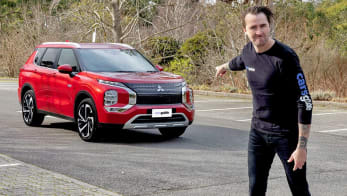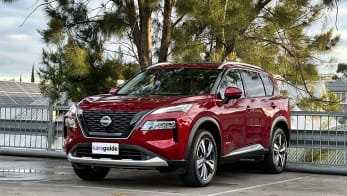They're regarded as the cars of the future -- because their driving range stretches beyond electric vehicles -- but there is just one catch...
It's a car, but not as we know it.
A trio of Toyota hydrogen vehicles -- which emit only water vapour from their tailpipes -- has landed in Australia ahead of a three-year trial of the future technology.
There is just one catch: for now there is only one hydrogen refueling point in Australia -- at the headquarters of arch rival car company, Hyundai.
But Toyota is importing a special mobile hydrogen refueller which will enable the hi-tech cars to be driven across the country.
The Toyota Mirai -- dubbed the "puffer fish" because of its bulbous face and large "gills" in the front bumper -- is already on sale in Europe, the US and Japan priced about $70,000, roughly twice the cost of a Toyota Prius hybrid.
Hydrogen cars are seen as the solution to future mobility.
However, in a classic chicken versus egg dilemma, there are currently no plans to introduce hydrogen cars in Australia because, for now, there is nowhere for customers to refuel them.
Hydrogen cars are seen as the solution to future mobility -- beyond electric cars -- because they can be refueled in the same time as petrol-powered cars and can travel the same distance between refills, more than 500km.
"We are extremely interested in fuel cell technology, but we need the relevant infrastructure in place before we can sell these vehicles in Australia," said Dave Buttner, Toyota Australia president.
"Fuel cell technology is expected to play a key role in the future and we do not want Australians to miss out."
How it works
Hydrogen is used to power an onboard "fuel cell", a miniature factory that creates electricity which, in turn, either charges the onboard battery pack or powers the car's electric motor, or both.
What it's like to drive a hydrogen car?
Inside it sounds as eerily quiet as an electric vehicle. Outside the vehicle there is a hi-tech hum and the occasional subtle whistle sound from the exhaust as it emits water vapour. Acceleration is about the same as a small hatchback, like a Toyota Corolla.
The long road for hydrogen powered cars
Mercedes-Benz imported an experimental hydrogen car as long ago as September 2004, but it was here only briefly for a demonstration to highlight a three-year hydrogen bus trial in Perth. When the program ended in 2007 it was not renewed and the hydrogen refueller was decommissioned.
In March 2015 Hyundai imported the world's first mass produced hydrogen car (built on the same production line as petrol and diesel versions of the same vehicle) and unveiled the only hydrogen refueling point in Australia. It has since traveled 4500km.
In July 2016, Toyota imported three of its Mirai hydrogen sedans for a three-year trial.
In October 2015, after more than a decade of experimental vehicles, Toyota imported its first mass-produced hydrogen car, the Mirai, for a month of local demonstrations. However, it could not be driven far because Toyota only had the hydrogen that came in the car's tank. There was no way to refuel it at the time.
In July 2016, Toyota imported three of its Mirai hydrogen sedans for a three-year trial; the mobile refueller is due in October 2016.
This will give the cars an unlimited driving range, from Sydney to Perth, Darwin to Adelaide, and from Cairns to Melbourne along the east coast of Australia.




.jpg)







.jpg)
.jpg)
.jpg)
.jpg)
.jpg)
.jpg)
.jpg)
.jpg)
.jpg)

.jpg)

.jpg)




.jpg)



.jpg)
Comments